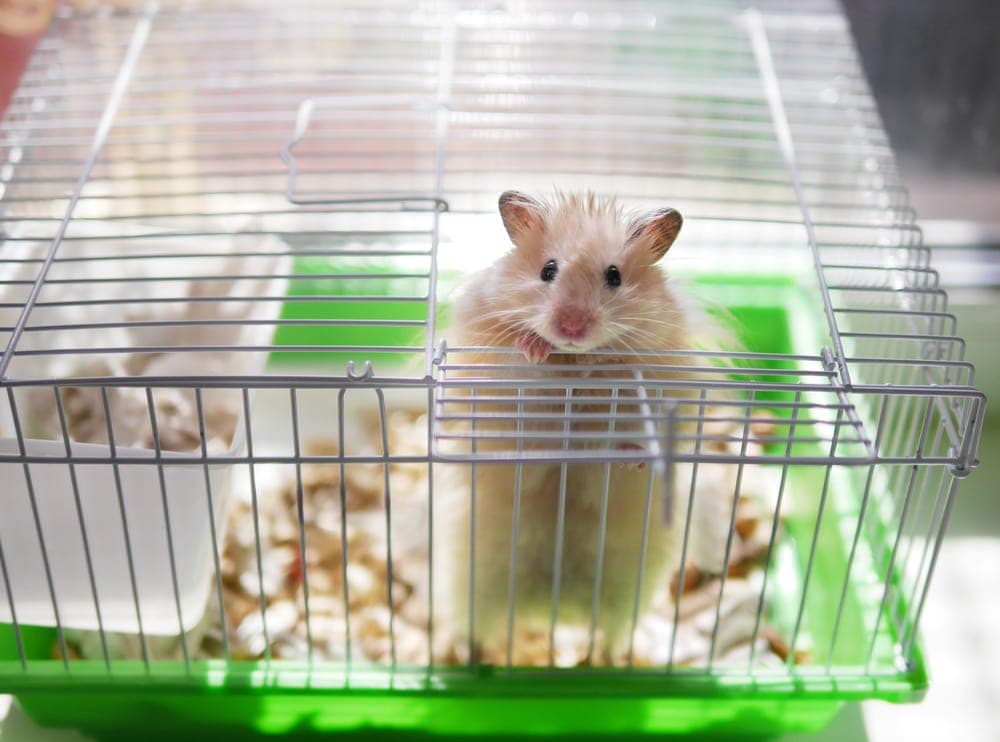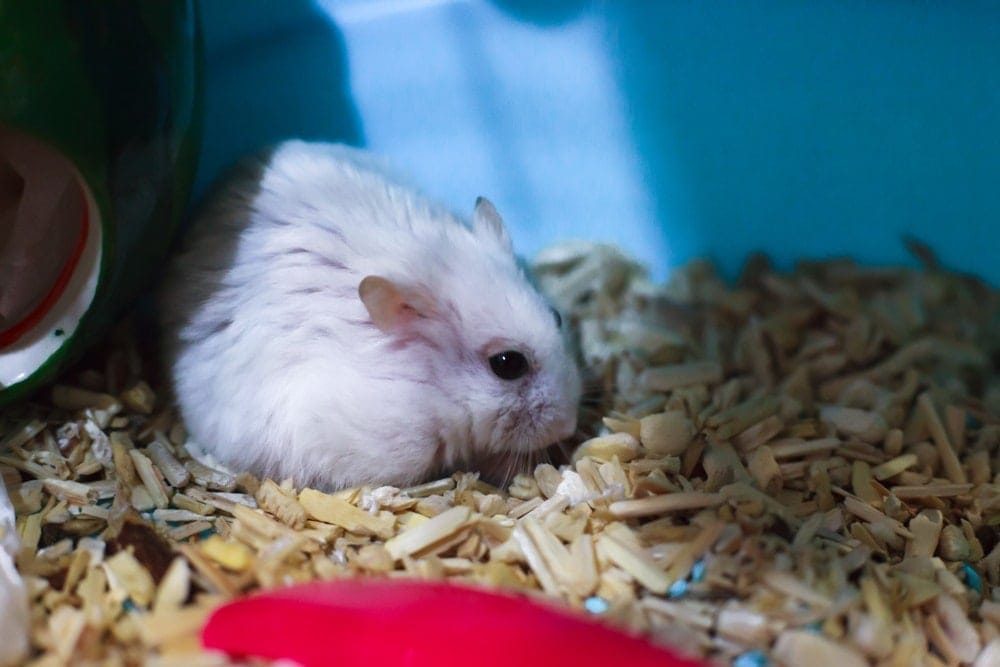If you are going to get a hamster, it is important that you choose the right size cage.
Your hamster’s environment plays an important role in its mental and physical health. The last thing you want is to choose a cage that isn’t the right size.
Importance of Your Hamster’s Cage Size
You will need to make sure that your hamster has an ample living space for numerous reasons. When these animals are kept in too small of a cage, they can develop severe anxiety, which can also affect their physical health.
A hamster that doesn’t have enough space in their cage is likely to exhibit all sorts of destructive and annoying behaviors. This includes everything from chewing on the bars of their cage to persistent escape attempts.
If you want to keep your hamster as healthy as possible, you will need to make a point of choosing a cage that provides them with enough space overall.
Minimum Hamster Cage Size
The absolute minimum size for a hamster cage is 18 by 13 by 25 inches for a total of 450 square inches. Keep in mind that you may need to get a larger cage for your hamster, depending on which breed it is. Putting your hamster in a cage that is any smaller than this can cause your pet to become very stressed out and anxious.

Hamster Cage Size by Species
There are numerous hamster species, some of which require a larger cage than others. You will need to consider this before deciding on a certain cage for your pet.
1. Syrian Hamsters
Because Syrian hamsters are larger than any other species, they require a bigger cage. These hamsters should be kept in a cage that is at least 620 square feet. This will give them plenty of space to run around and play.
It is okay to put these hamsters in a wire cage, as they are bigger and not likely to slip through the bars like other species. You will, however, want to provide them with plenty of toys so they don’t end up chewing on the bars.
2. Dwarf Hamsters
Campbell’s dwarf hamsters are smaller than the Syrian variety, but slightly larger than their Roborovski counterparts. These hamsters should be kept in a cage that is 450 to 500 square feet minimum.
3. Chinese Hamsters
If you own a Chinese hamster, you’ll want to get a cage that is at least 500 square feet. These hamsters range from 3.2 to 5 inches long with a mass of 1.1 to 1.6 ounces as adults. It is imperative that they have a good amount of space roam around inside of their cage.
Cage Security
It is also important that you consider how secure your hamster’s cage is. This will prevent escape attempts, which can put their health and wellbeing at risk. Make sure that the bars on their cage are no more than half an inch from each other.
You should get a cage with horizontal bars so that your hamster can climb and stay happy. You should also check to see if the doors on the cage are secure so that you know your hamster isn’t going to escape.
If you want to add some security to your hamster’s cage, you can always install some metal bolt clips. These will definitely ensure that your furry friend isn’t going to get out of its cage no matter how slippery they are.

Cage Shape
You’ll also want to look into some of the different hamster cage shapes that are available, as there are many options to choose from.
1. Round Cages
There are round hamster cages that you can buy in pet stores, but they aren’t well-suited to all hamsters. These cages are best for small species like Campbell’s dwarfs. One of the big drawbacks of round cages is that they aren’t conducive to climbing.
2. Square Cages
There are a lot of square hamster cages, and they are probably the most common. These cages allow for climbing, which is important for hamsters in general. They also give your hamster plenty of space for taking naps.
3. Rectangular Cages
Some of the biggest hamster cages on the market are rectangular. These cages tend to have extra things like tunnels/tubes, lofts and ladders. All of these things will help a lot with keeping your hamster stimulated and happy.
You will be able to find rectangular cages with multiple levels, which provides your hamster with plenty of space to run around and play. These “hamster condos” have become very popular in recent years, so it is an option worth considering.
While you might have to spend a little bit more on a rectangular cage for your hamster, it is definitely worth it when you consider the benefits. The more space your pet have, the happier it will be.
There is definitely a connection between the stress levels of hamsters and their life expectancy. If you want to keep your pet around for as long as possible, you will need to look for the right cage.
Conclusion
- It is important for hamsters to be kept in a cage that offers a good amount of space so they do not become stressed out or anxious.
- The minimum size for a hamster cage is 18 by 13 by 25 inches for a total of 450 square feet.
- If you have a Syrian hamster, you should keep it in a cage that is at least 600 square inches.
- Roborovski dwarf hamsters can be kept in a 450 to 500 square inch cage.
- Chinese hamsters need a cage that is at least 500 square feet.
- The bars on your hamster’s cage shouldn’t be more than half an inch apart from each other.
- Make sure that the door on your hamster’s cage is secure so you know they cannot escape.





